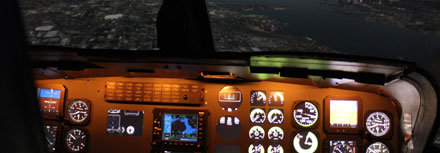
A team of Northland aviators and an IT engineer turned helicopter instructor have swerved the $1 million-plus pricetag associated with buying a new flight simulator and built their own for what they say is 15 percent of the cost of what’s commercially available.
The machine was made using the cockpit and fuselage of a helicopter damaged in the 2011 Japanese tsunami and includes an instrument panel built from scratch. It’s powered by five computers.
Team leader Jon Keller grew up in Hawaii but moved to New Zealand at a young age and entered aviation in 2007 after an IT career. He says the simulator, based in Whangarei Airport, was built to meet Civil Aviation Authority regulations but also to be realistic.
“The visuals package is above and beyond expectations,” Keller says. “There is a 270 degree field of view, instead of seeing just out in front of you. You look left and right, over your shoulder, and even though it doesn’t move you still get the sense of movement just like in a real aircraft.”
The simulator uses high resolution potentiometers, electro-mechanical devices designed for racing cars that convert linear motion into resistance change. Situated in the simulator’s roof, they detect hand and pedal control movement. “It basically turns the entire fuselage into a giant joystick,” says Keller.
The machine isn’t classed as a full simulator because it doesn’t move, but the team says it offers an authentic experience and will allow it to do new things in flight training. That includes taking a whole crew, including paramedics, on board and carrying out drills like managing engine failure.


